Thursday, June 12 - Plenary Session
Name: Megan Ansdell
Affiliation: Institute for Astronomy, University of Hawaii
Title:
The Intrinsic UV Luminosity Distribution of M Dwarf Stars
Abstract:
M dwarfs exhibit strong magnetic activity that may create intense ultraviolet (UV) radiation environments in their circumstellar habitable zones. Quantifying their intrinsic UV luminosity distribution as a function of spectral subtype and age is therefore critical to understanding the potential of M dwarfs as habitable planet hosts. To this end, we have characterized a population of ~5,000 M dwarfs in UV luminosity vs. V-J color space by cross-correlating the Lepine & Gaidos (2011) catalog of nearby late-type stars with the GALEX all-sky catalog of near-UV (1770-2730Å) sources. We find a primary locus of UV-dim M dwarfs (presumably the inactive stars dominated by low-level photospheric emission) as well as a separate population of ~1,000 UV-bright M dwarfs (presumably the active stars dominated by stronger chromospheric emission). The UV-dim locus has an intrinsic width in excess of measurement errors of ~0.5 mags; this spread could be due to metallicity effects or may suggest that M dwarfs exhibit base levels of activity throughout their lifetimes. We measured Hα equivalent widths and searched for wide binaries (~10^3 AU) using moderate-resolution integral-field spectra for ~500 UV-bright M dwarfs in order to confirm activity. We vetted both populations for false-positive UV detections resulting from interacting binaries or unrelated background sources. The intrinsic UV-luminosity distribution, corrected for false-positives and photospheric emission, features a ~1/L_UV shape that indicates a smooth transition between inactive and active epochs. We also combine this intrinsic UV luminosity distribution with local star-formation rates to constrain possible age-activity relations.




